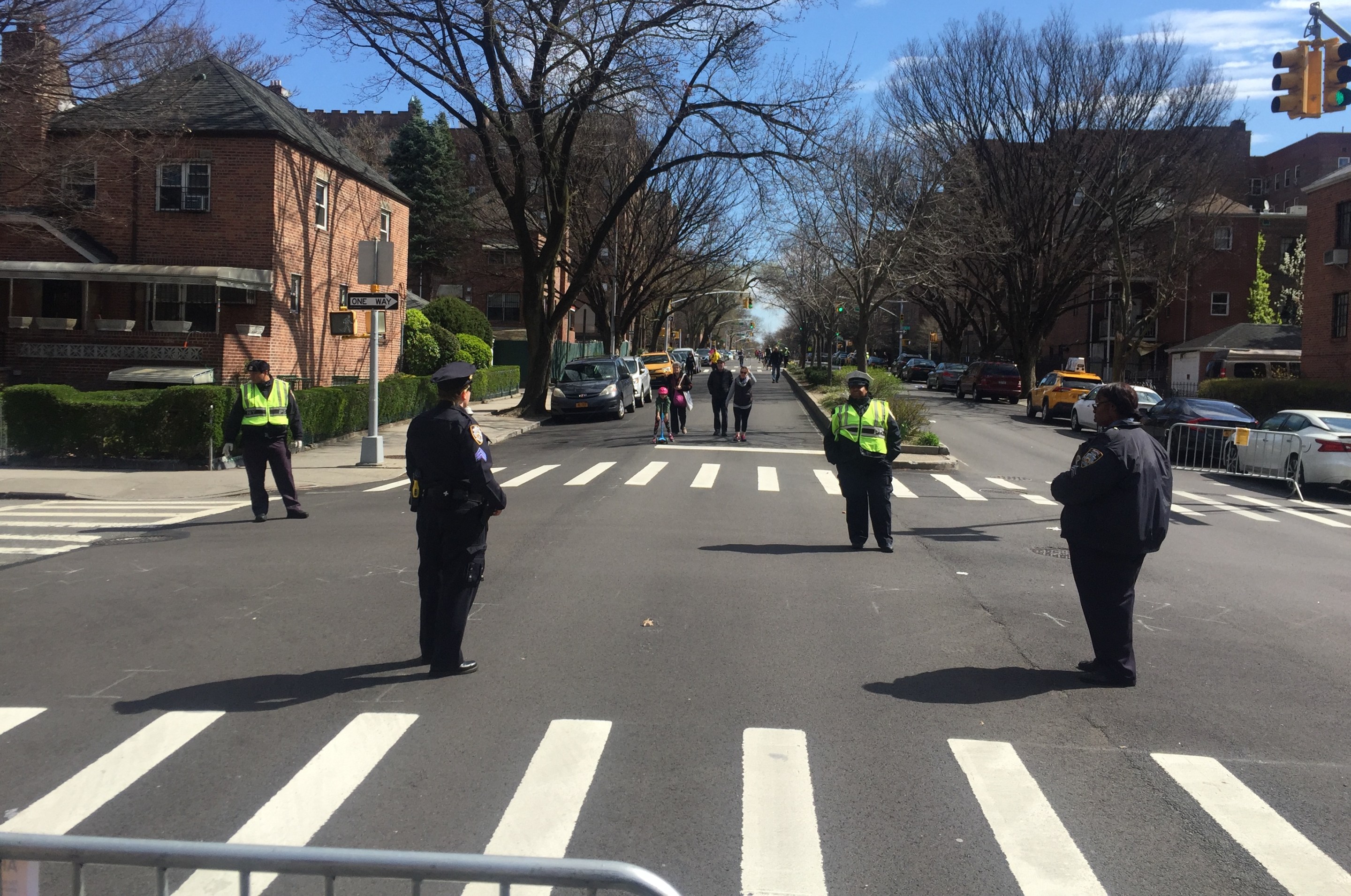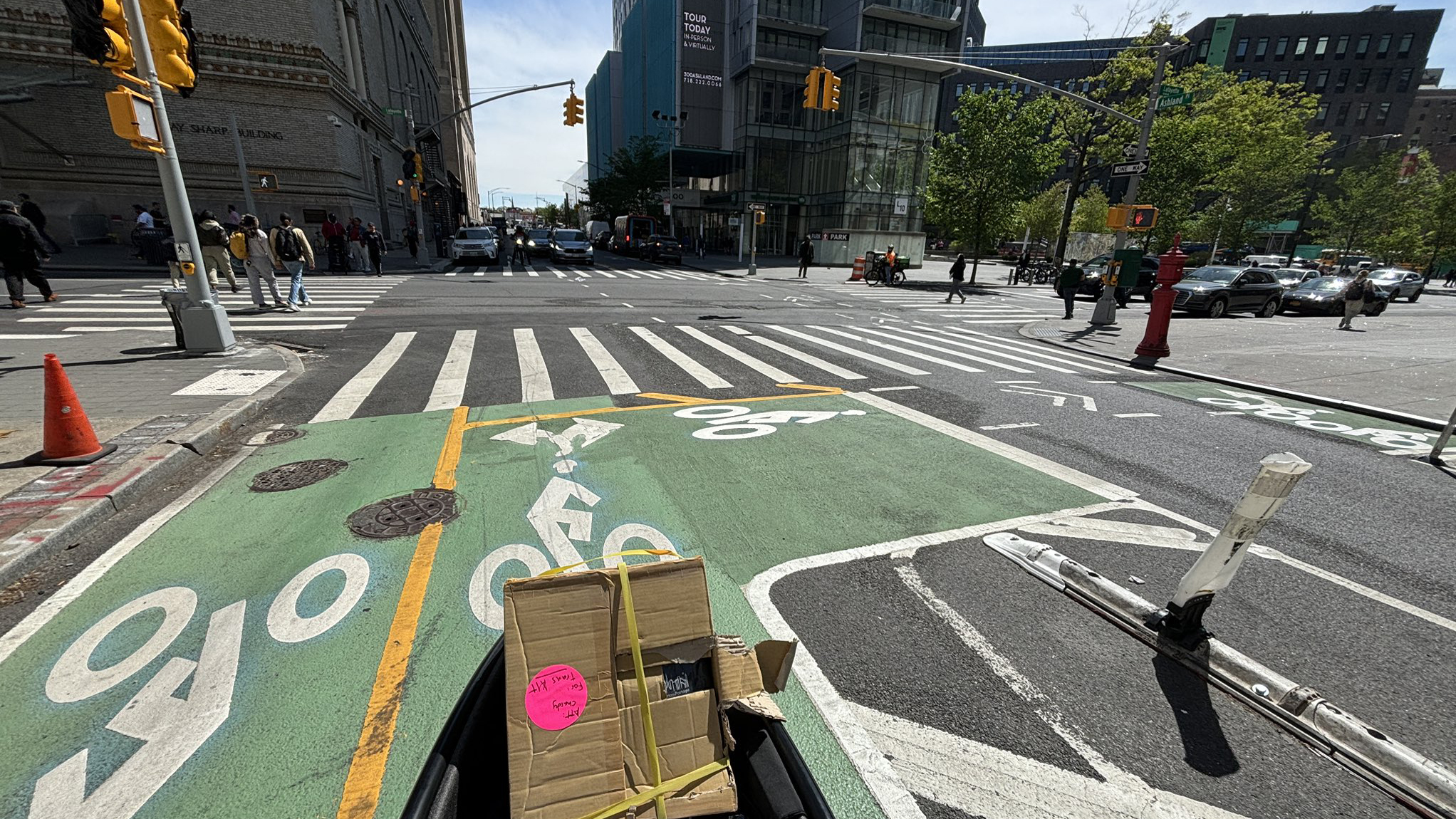The four stretches of roadway set aside as a four-day, car-free pilot program last week will continue as open space for pedestrians through Sunday, Streetsblog has learned.
City Hall, responding to a battery of questions from Streetsblog about the success of the much-maligned, but also popular, program, said only, "We are extending the pilot with the existing streets until Sunday."
Streetsblog had reached out to the de Blasio administration because it had said it would evaluate the four street closures — short portions of 34th Avenue in Queens, the Grand Concourse, Park Avenue in Manhattan and Bushwick Avenue — to determine if the program could be expanded.
For now, it cannot. But it can be extended.
During the four-day experiment with open space, Streetsblog and others found the four short stretches a welcome addition to the neighborhoods through which they pass, but also stunningly small addition to overall public space in a city where people must now remain six feet apart at all times. The four stretches of roadway comprise a mere 1.5 miles of a city with more than 6,000 miles of pavement to which car drivers have virtually unfettered action.
As such, advocates were disappointed at today’s news:
“It only makes sense to continue the program as our ‘pause’ grinds on and the season turns to spring,” said Jon Orcutt of Bike New York. “Relaxing the heavy police presence would allow it to expand to additional neighborhoods”
Mayor de Blasio had said he wanted to start small because the program was dependent on enforcement by NYPD officers and guards, who stood by in huge numbers to prevent crowds from forming. At one point, there were 24 police employees in the five-block car-free stretch of Park Avenue; 19 along Bushwick Avenue.
That said, the open space proved popular with residents, who told reporters that they enjoyed the quiet of their local street without cars. Many hoped the program would be expanded, especially given how many block parties are held on any given summer weekend with little need for police presence.
Streetsblog had asked the following questions:
- How will the city evaluate the success of the pilot? (Saturday and Sunday were rainy, for example, so that will play a role, no doubt.)
- Will the program be expanded? If not, why not?
- Will the city consider a different type of road segment (residential streets, for example, instead of through streets that may not a big NYPD presence)?
The last question refers to how the roadways in question had been chosen. Mayor de Blasio consistently declined to explain why he and his team had chosen major roadways rather than easier-to-secure residential streets. Department of Transportation Commissioner Polly Trottenberg had explained in a Daily News op-ed on Sunday that "we looked for wide streets with adequate room for social distancing in dense neighborhoods that lack open space. We also looked for streets that did not have hospitals or function as bus or truck routes, which are now carrying critical workers and supplies. NYPD also made the decision to provide for controlled access on the cross streets to ensure that essential vehicles, especially ambulances, could get through."
But critics have said the "security" requirement — with many cops securing each intersection, often in idling cars — was the program's albatross. Many block associations close off random blocks in residential neighborhoods with no disruption to the larger transportation network. NYC Comptroller Scott Stringer had argued that street fairs provided a better model than the one ultimately settled on by the de Blasio administration.
For now, Transportation Alternatives is optimistic.
“This is a positive step and we appreciate the City's quick roll out and expansion of this open streets pilot. We hope to see this idea expand to more neighborhoods so more New Yorkers can benefit." said the group's Executive Director Danny Harris.





